ASUS Maximus VII Impact Review: Premium Gaming Z97 in mini-ITX
by Ian Cutress on December 9, 2014 10:00 AM ESTASUS Maximus VII Impact BIOS
The last ROG motherboard we reviewed was the Rampage IV Black Edition at the beginning of the year which brought a few of ASUS’ newer features to the X79 platform at the time. Fast forward almost a year and we get a big change all around. The main difference will be that ASUS now uses different fonts for different parts of the BIOS, allowing certain screens like EZ Mode and SPD Information to show more information on the screen at one time. The red and black ROG theme is here as well.
In the EZ Mode is the name of the motherboard, the BIOS version, the CPU installed, the speed of the CPU, the memory installed in each DIMM slot, the speed of the memory, the CPU temperature as a graph (useful if you forget to plug the CPU fan in), the CPU voltage, the motherboard temperature, a per-SATA port run down of what is attached, an option to enable XMP, the current fan speeds, a quick overview of the fan profile, a section for EZ System Tuning and Boot Priority. As far as lists for the front page of a BIOS go, that list is pretty extensive and complete. For a system builder or debugger, this is a lot of information all at once on the first screen. Users have several options here, including selecting to manually adjust the fans:
For each fan header we can control it by DC or PWM, and either use one of the preselected fan profiles underneath the graph or select manual and adjust a three point gradient. Three points is OK for a custom gradient, although an option to set all fans to the same profile at once would be handy.
Also on the EZ Mode screen, by pressing F11 or selecting the option at the top, is the EZ Tuning Wizard.
This interface is for users to set up either a quick RAID solution or for a quick overclock. In terms of the overclock selections, it first shows the current system arrangement as above, and then asks about the typical CPU usage:
Then the cooling:
With this information at hand, it will give a final overclock prediction for the system which can be implemented with a restart.
Here it offers a 25% overclock on the CPU (3.5 GHz to 4.375 GHz) and 19% on the memory (DDR3-1600 to DDR3-1904).
ASUS puts all the juicy options for extreme overclocking in the advanced menu. We get taken straight into the Extreme Tweaker section:
The Extreme Tweaker initial menu contains a lot of the interesting options for overclocking, although some of them will be quite foreign. Motherboard manufacturers are currently in a decision making process whether to offer all the overclocking options in one single menu, or partition it off into sections. Due to the sheer number of options, sometimes the result is the mix between the two, such as here on the Impact.
Right off the bat we are given the indication that LN2 Mode is disabled and the first option is a series of overclocking presets:
For users with sufficient knowledge and cooling, these presets adjust some of the more obscure settings to a better default value in order to help break records.
The DRAM Memory timing options are equally as verbose as the Extreme Tweaker selection:
Six screens of DRAM options for 99.99% of owners is a bit manic, however there will be one user who might be able to squeeze out that extra MHz for a record to hang on ASUS’ wall. ASUS often produces overclocking guides for their BIOSes, so it might be worth heading over to the ROG forums to have a look for one.
In the DRAM menu we also get a series of options for memory presets:
Professional overclockers often have access to the best memory kits in the business, especially the rare or expensive ones. ASUS has a number of extreme overclockers internally to help drive these presets.
Digital Power control is also in the Extreme Tweaker section of the BIOS, with Load Line Calibration and VRM Switching frequencies being important options right at the top. A lot of these options are also in the operating system software.
If all the overclocking and DRAM options were not enough, there is another page for the ‘Tweakers’ Paradise’. Again, best refer to the ASUS ROG overclocking guide on this one.
Some of the CPU Power Management tools are here in Extreme Tweaker too, useful for turbo modes and power limits.
Moving away from the overclocking options puts us on the Main tab, giving the BIOS version of the board as well as the CPU name, speed, ME version, MAC Address of the NIC and memory info. This is more the entry screen we are used to without an EZ Mode, but it is worth noting that the three ROG ICs used for ASUS’ ROG line are all mentioned here as well with their respective version designations.
The Advanced tab fills out most of the rest of the BIOS, giving more options related to non-overclocking related tools such as controllers, PCIe operation, onboard devices and ROG custom effects.
The CPU Configuration menu allows users to enable VT-d or adjust the number of cores in operation. The Dynamic Storage Accelerator, to keep the storage in a high power mode for best performance, is disabled by default.
In the BIOS both RST and Smart Connect Technology are disabled by default, as well as Above 4G Decoding for GPU co-processors.
Each of the USB ports can be controlled manually, allowing system builders to save power or to adjust how USB ports are used if one of them fails:
Also by default the system has CPU Graphics Multi-Monitor disabled:
However all the directly usable onboard devices are enabled:
The ROG Effects option relates towards the Onboard LEDs and the Q-Code dual digit debug LED on the rear panel:
Users can disable this if they want fewer lights enabled when the system is powered on.
The Monitor tab is split into voltage/temperature monitors followed by fan monitoring and control. This is historically in separate menus on the channel motherboard line, but for ROG it gets split accordingly.
Users with fans attached to the motherboard can implement Q-Fan Tuning which will detect the dead point of each fan and adjust the fan profiles to match the lowest RPM up until the CPU hits a certain temperature.
Users can navigate to the Fan Speed Control option to have a textual based fan setting experience. Ideally ASUS would move the graphical fan controls here as well.
The Boot tab is similar to previous Z97 ASUS BIOSes, giving options for Fast Boot followed by Boot Order and Boot Override.
The Tools tab is where more of the fun options exist, and users can disable the screen swipe animations here as well:
In the tool kit from ASUS is the BIOS flashing/updating utility, EZ Flash 2:
For the Z87 Impact we saw the first iteration of Secure Erase, which is similarly present here on the Z97 model:
This allows users to return their SSD back to its default factory-state (minus some wear) in terms of speed rather than doing hocus-pocus with hdparm and Linux. ASUS has noted that they put this tool in when they were confident it would work with most if not all the drives on the market.
ASUS still has the My Favorites page for easier overclocking or option setting. Here I selected a few of my most commonly used options when I am testing my maximum 24/7 overclock.


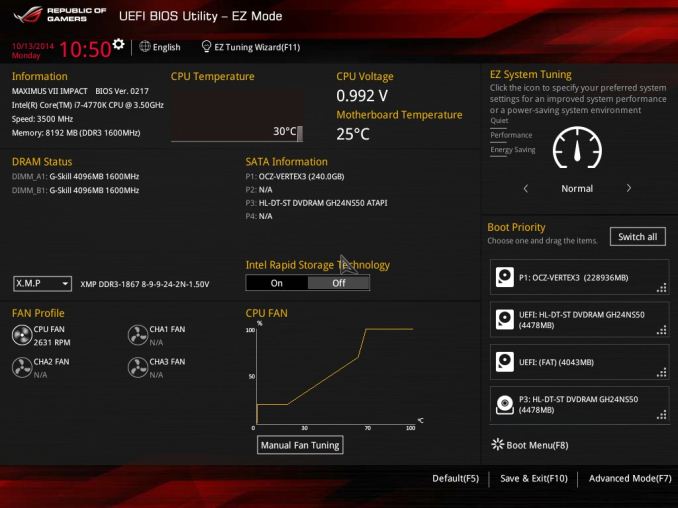


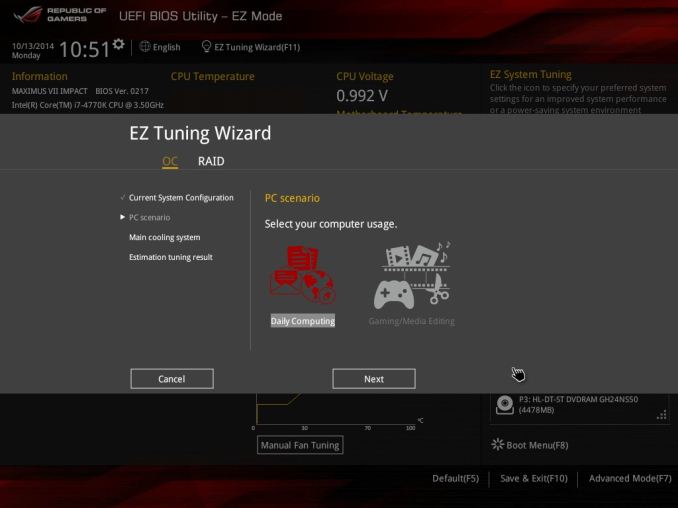
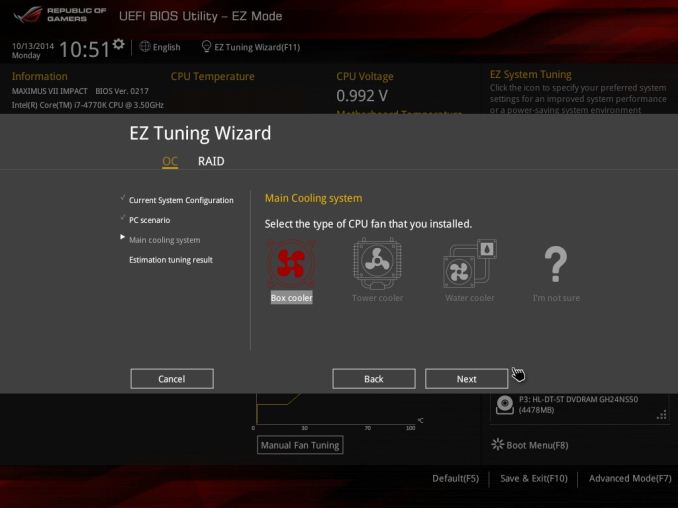
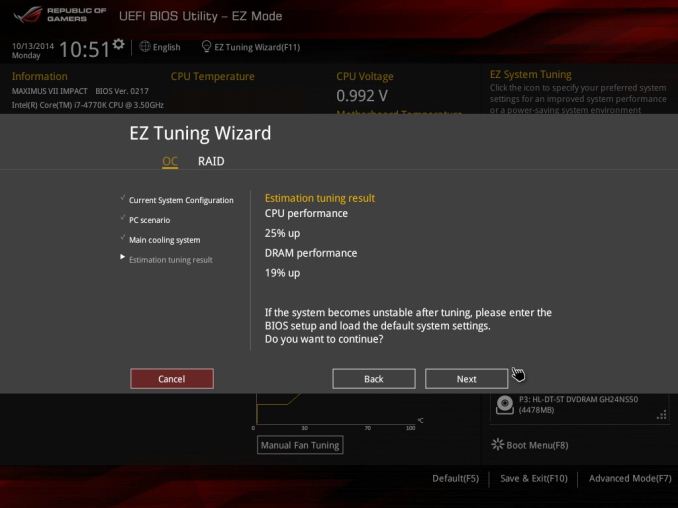
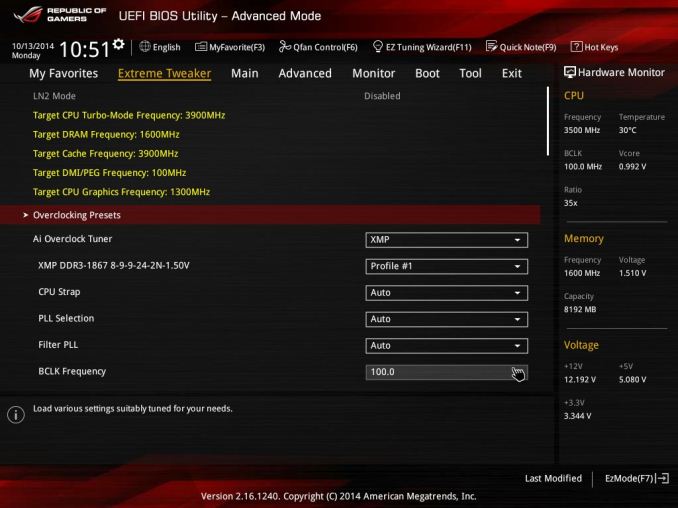
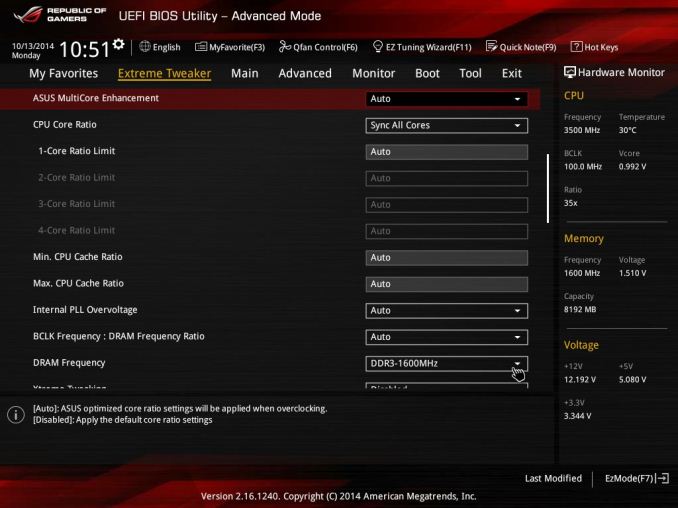
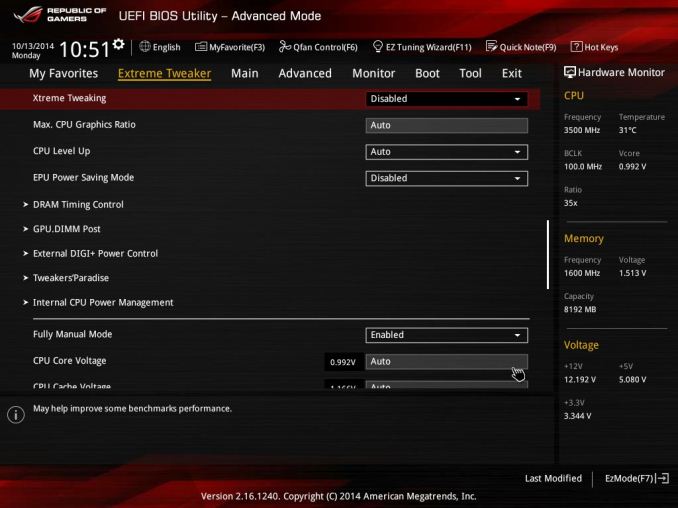
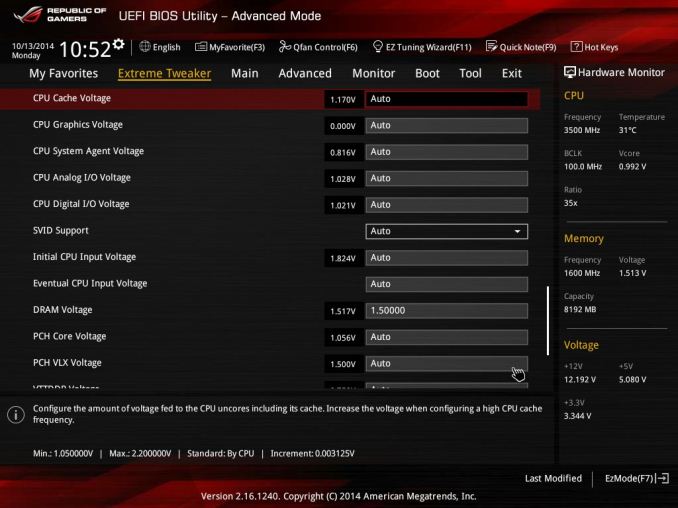
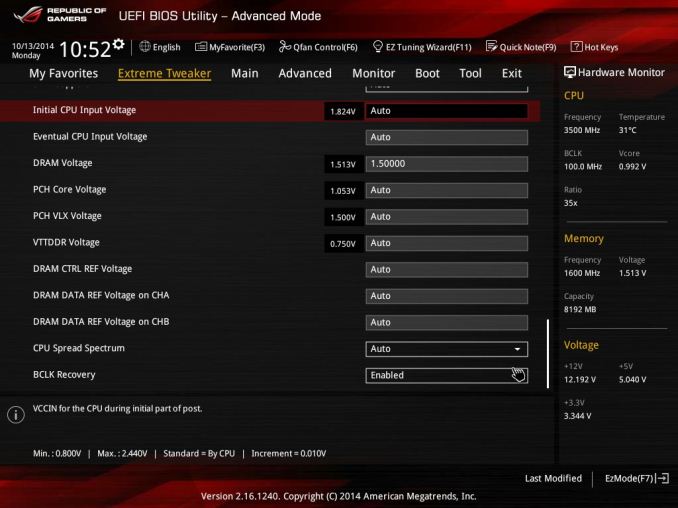
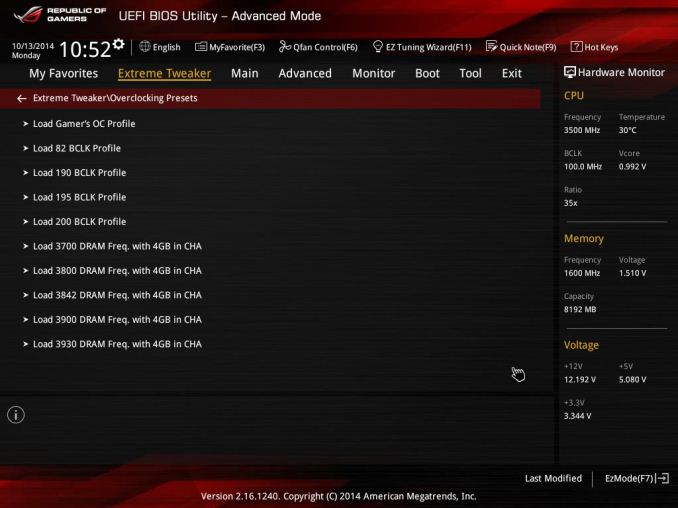
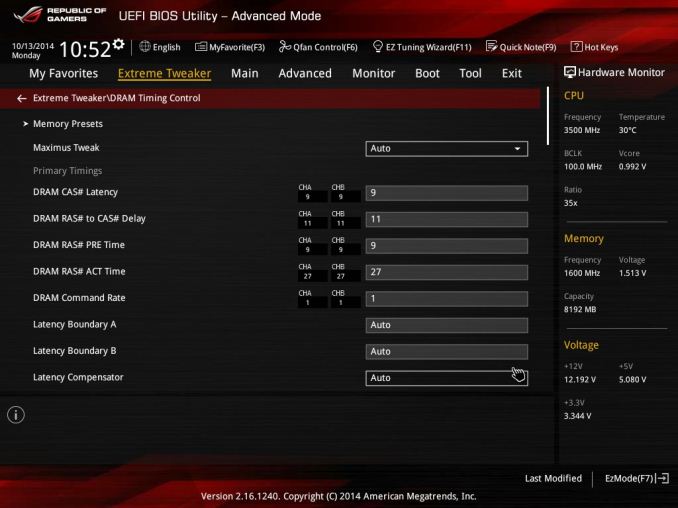
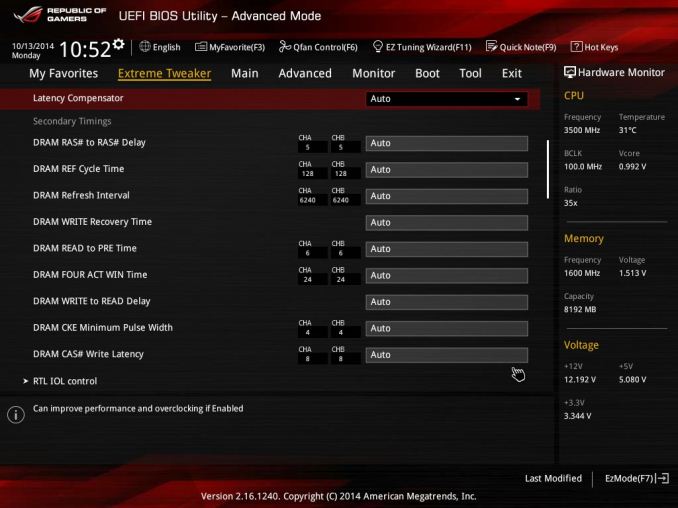
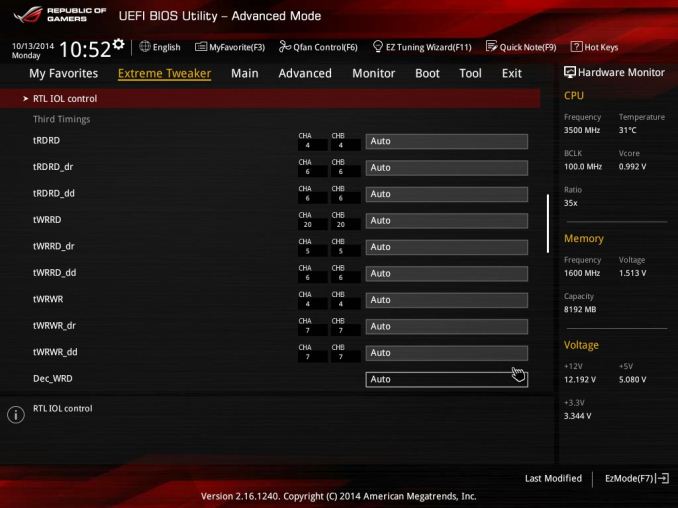
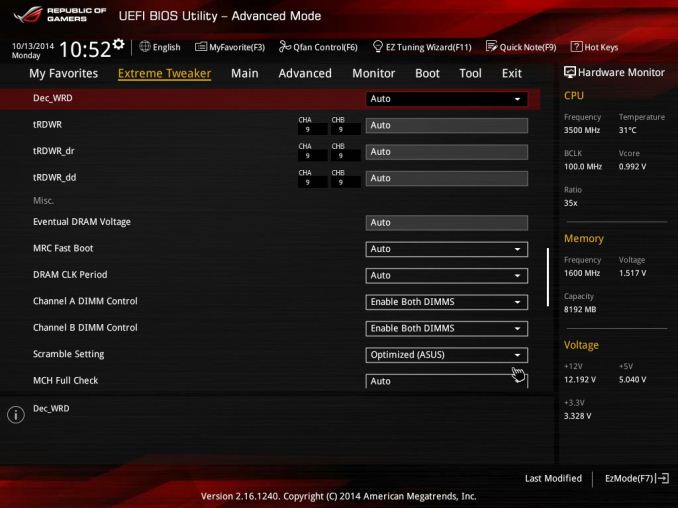
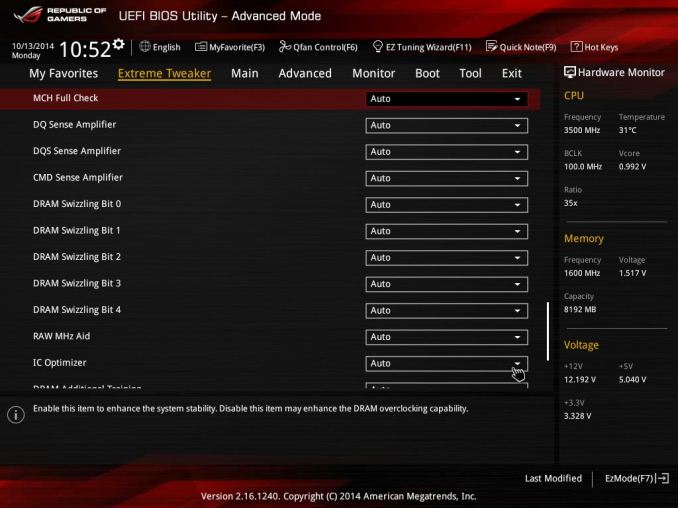
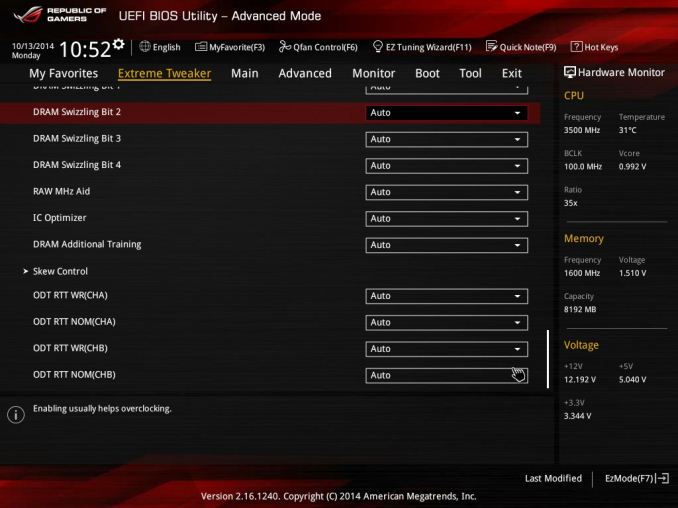
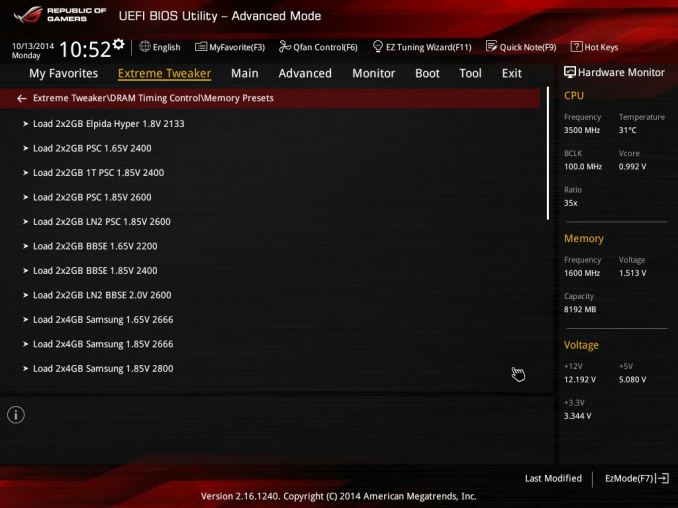
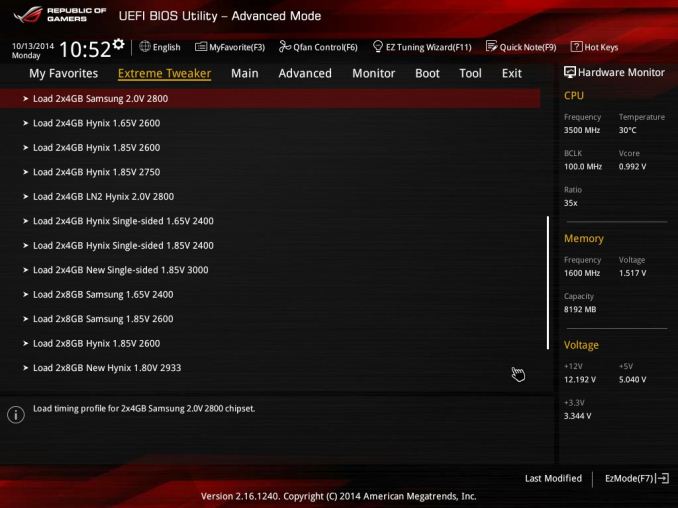
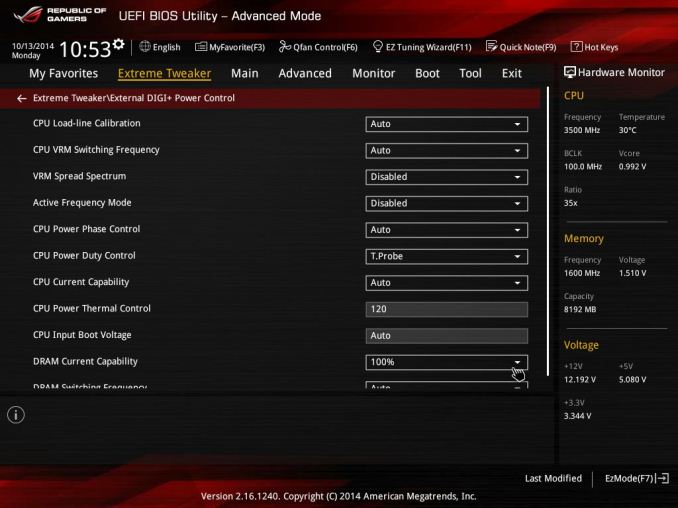

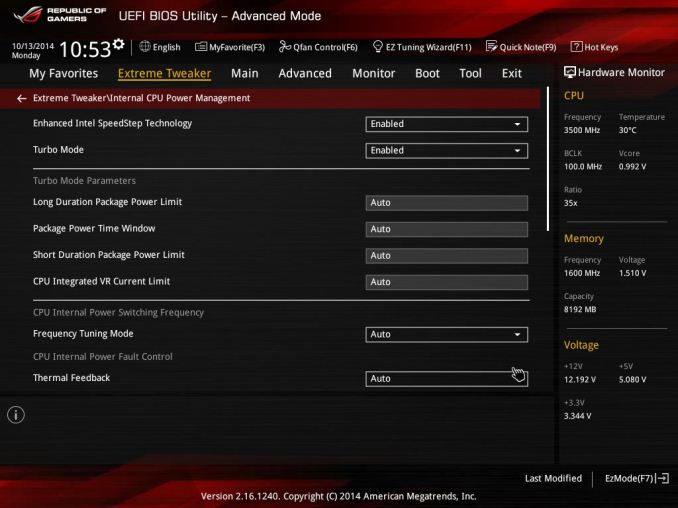
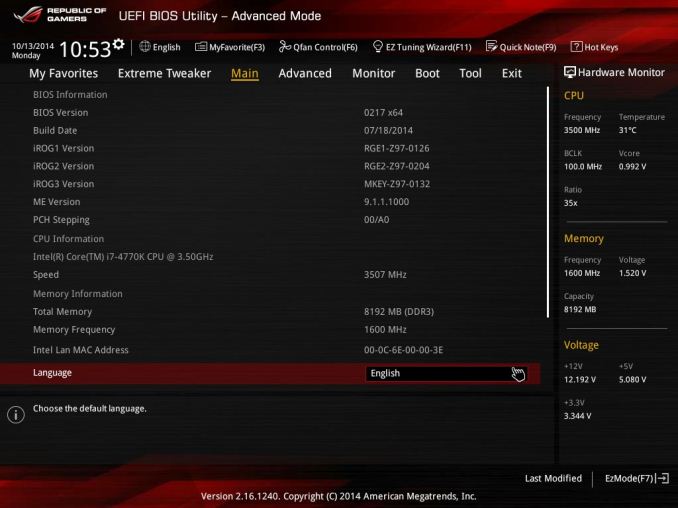
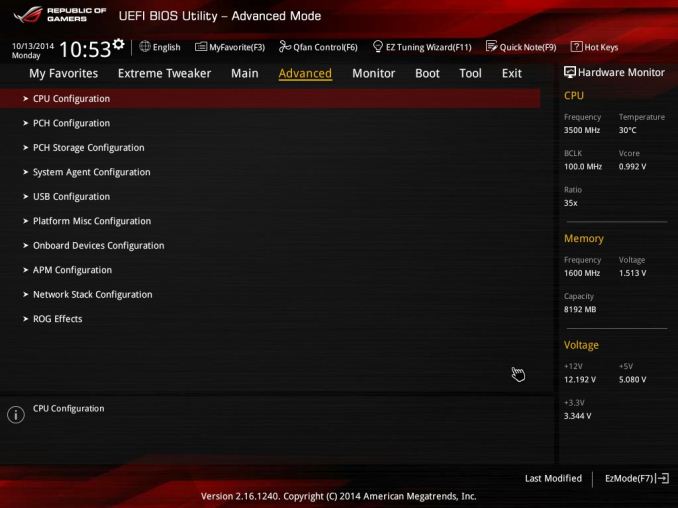
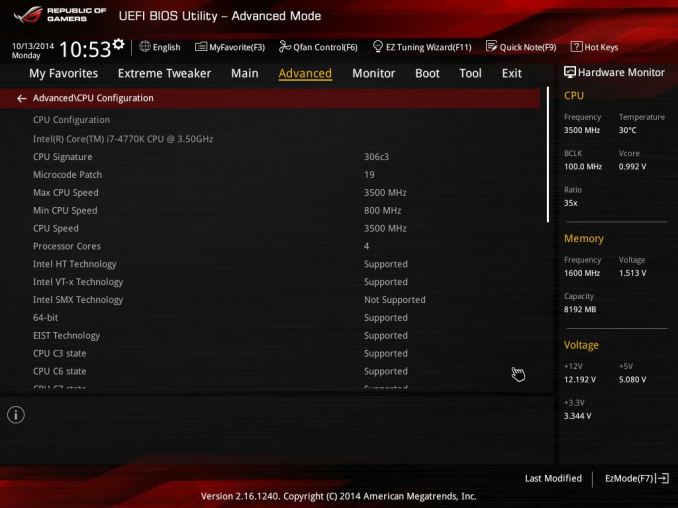
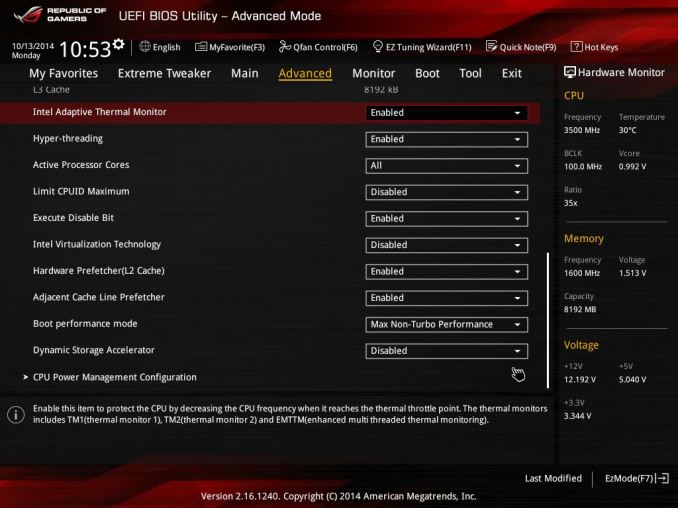
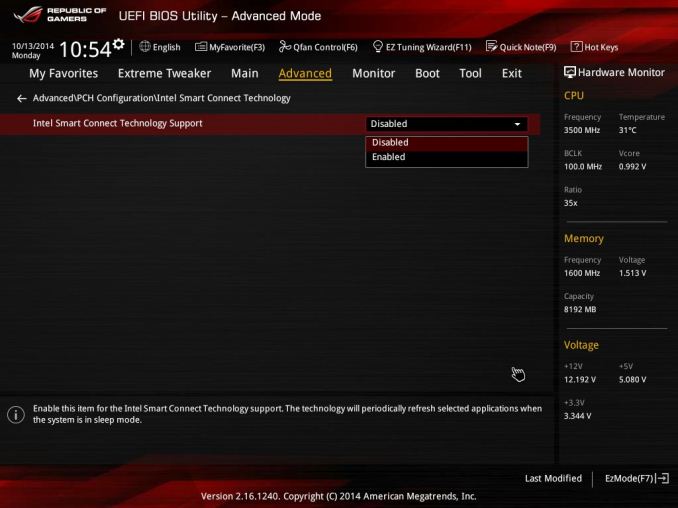

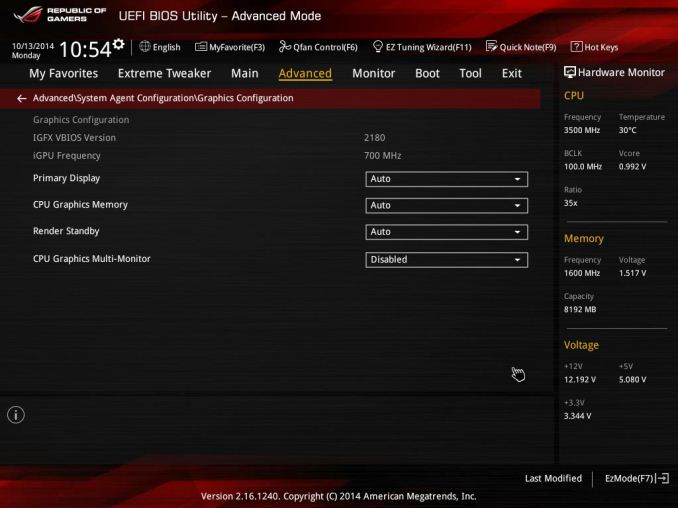
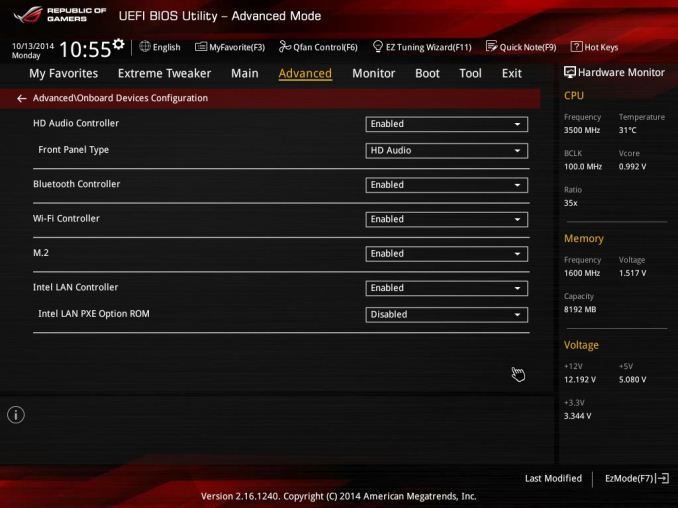
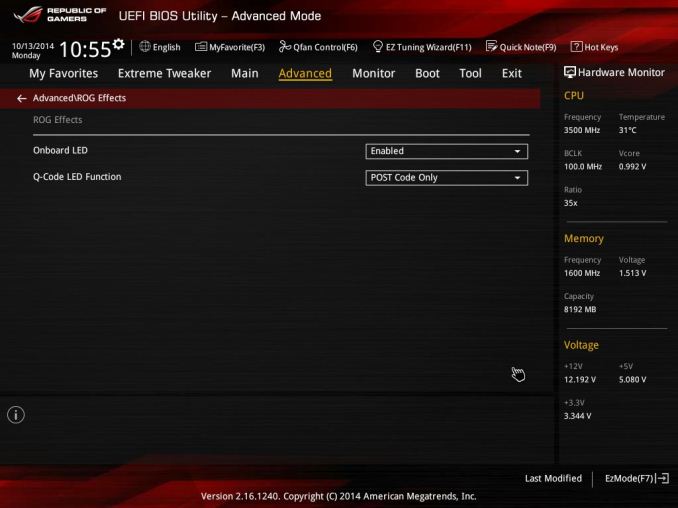

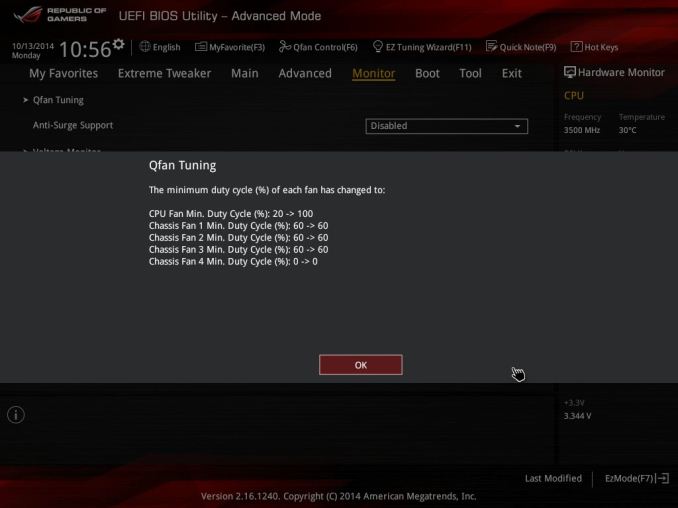
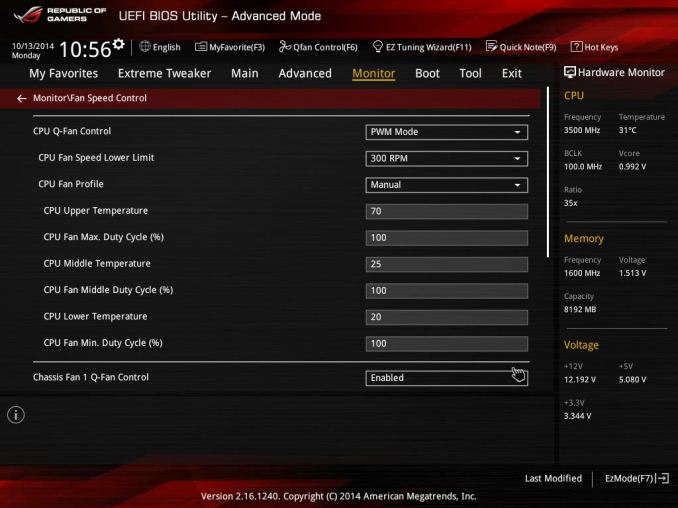

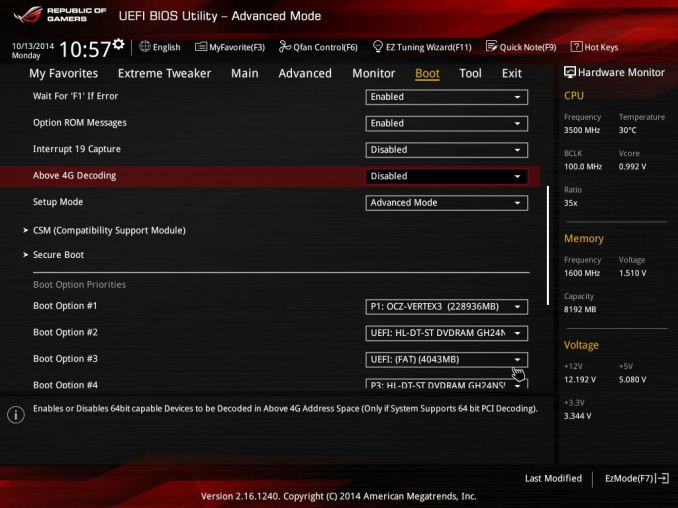
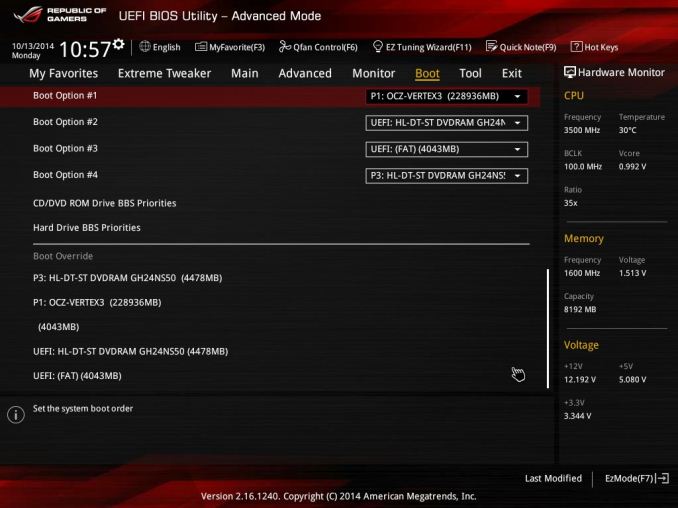
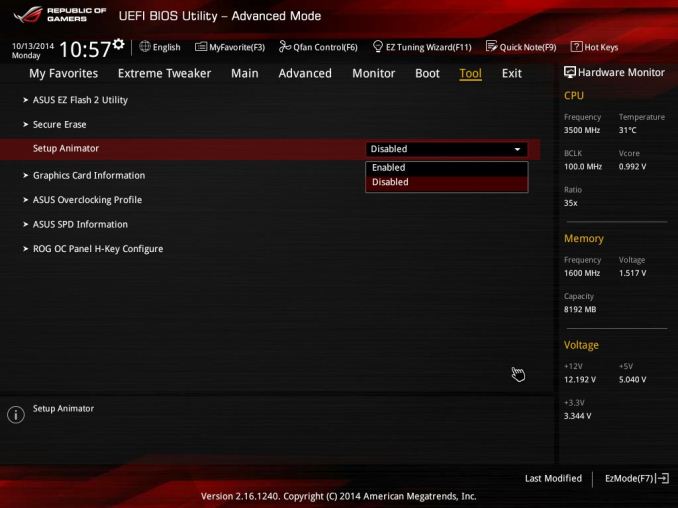
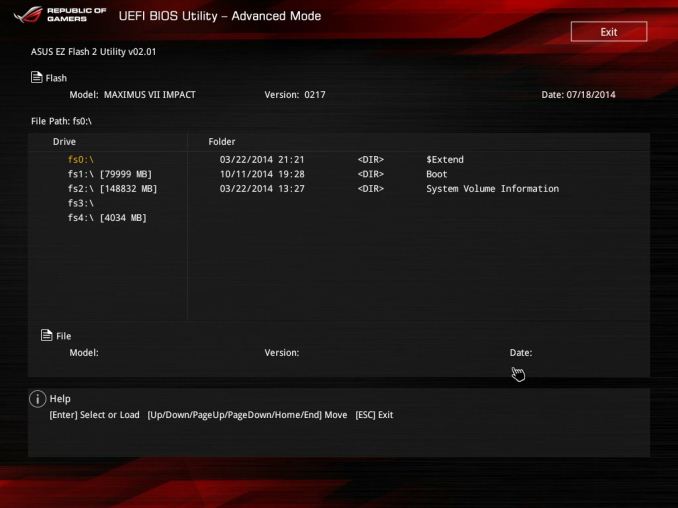
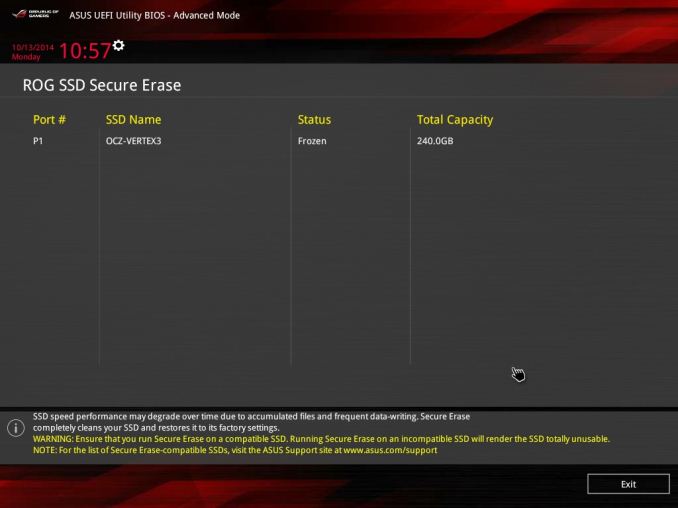
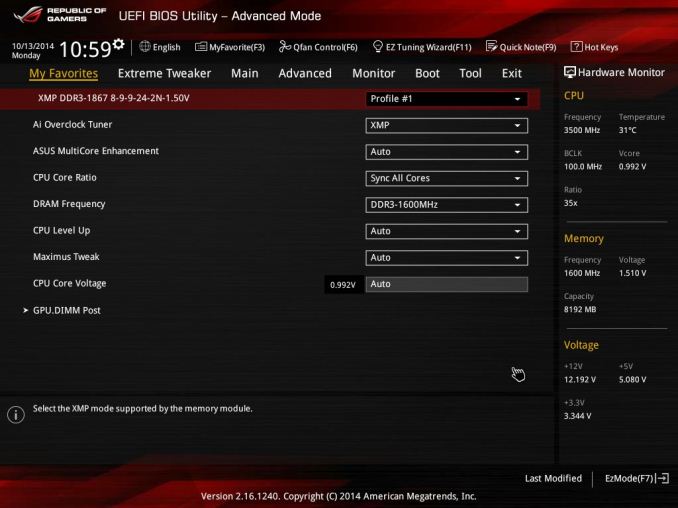














41 Comments
View All Comments
Gigaplex - Tuesday, December 9, 2014 - link
"However due to the detachable audio card, replacing it doesn't require a completely new motherboard."Unless they actually sell the audio cards separately, you're likely to need to replace the whole package anyway.
Laststop311 - Wednesday, December 10, 2014 - link
You could find a used mobo for cheap on ebay by the time an audio card dued and just buy it for the audio card. Probably even be able to find boards that aren't working correctly with a salvageable audio card.Laststop311 - Wednesday, December 10, 2014 - link
died*just4U - Tuesday, December 9, 2014 - link
Tough call between this one and MSI's Z97i gaming ac. I'd say the two sit atop the heap as far as quality goes. I am actually not bothered by the price of either.. as your trying to go small but that doesn't necessarily mean a budget build. Curious what Gigabyte has in their pipeline.. but all in all I like what I see from Asus here.. especially where the power connectors are. Nice review Ian.Laststop311 - Wednesday, December 10, 2014 - link
It's really not a tough call Asus are the ones who started using separate boards for the power delivery and they have the experience and know how to do it best. Before Asus did that manufacturers were just using rly skimpy cut back heavily power delivery so it would fit on the board. Rather than go that route asus pioneered using a separate board so they had the room to make a beefy power delivery design and not have to sacrifice any OC potential compared to a larger board. Also as this review shows the bios and the software that controls asus motherboards is more advanced and more technically capable than MSI's.The pcie-3.0 x4 slot for m2 ssd's is also huge. That's an incredible 4GB/sec of bandwidth. This also allows you to keep the build incredibly tiny as you can attach no storage drives other than the m2 card such as this one:
"The Samsung SM951 is expected to be NVMe compatible, and will be capable of up to 1,600/1,000 MB/s sequential reads/writes and 130K/100K IOPS 4K random reads/writes – slightly faster than the XP941 rated for 1,400 MB/s sequential reads. The drive is also NVMe low power (L1.2) certified and is rated to draw <10mW power at idle (probably DevSleep mode). Available in capacities up to 1TB"
So even with no 2.5" or 3.5" drives you can still have 1TB of storage space on a drive with 1600/1000 speeds 3x-4x faster than anything used now. This board is just the perfect starting point for an ultimate incredibly fast small form factor pc. With no 2.5" or 3.5" drives, no optical or any other outside media drive you only need enough space for a PSU (a small 600 watt 80+ gold silverstone sfx sized psu) your graphics card (a small mini itx sized gtx 970) and then since no optical or any other drives u can fit a nice 240/280mm rad on the top and you can overclock like you are inside a regular large tower.
You can build a really neat really powerful tiny mini PC and by using this board you end up with more power and features than even many ATX sized boards. This board allows you to go small without making a single real sacrifice and in most cases adds more features then many big boards. You can't go wrong with this board. Hell its even a nice board to choose even if you can fit an atx sized board. At 240 this board has the same features as atx sized boars that are 275+
Laststop311 - Wednesday, December 10, 2014 - link
Also since this is a mini itx board and haswell cpu's only have 20 pci-e lanes coming directly off it you can freely use the 4x m2 ssd slot and since there is only 1 pci-e expansion slot you don't have to worry about making any sacrifices since you are using the m2 slot you still get full 16x gpu bandwidth (even tho 8x is basically identical performance still nice to eek out that 1% better on 16x.)just4U - Wednesday, December 10, 2014 - link
No .. it's still a tough call. I like both boards. :)dwade123 - Wednesday, December 10, 2014 - link
Stupid price. I rather get an x99 setup if i want to spend that much on a freaking motherboard.krazy_olie - Wednesday, December 10, 2014 - link
No x99 itx motherboard exists....krazy_olie - Wednesday, December 10, 2014 - link
Picked up this board in a bundle.The fan headers is a bit of a stupid situation, on the plus side you get 3 headers in 2 locations. on the downside these aren't pwm. I have a fan plugged in to cha_fan3 and it runs at full whack and can't reduce the speed. I need to try channel 1 to see if it's a problem generally or just with the coolhub.
Worth noting that the z97i plus actually has pwm headers with fan xpert 3